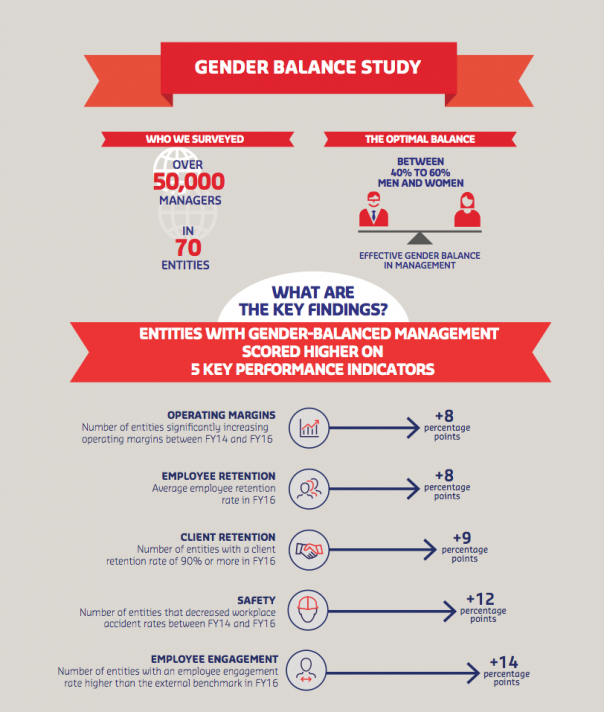
The five-year study of 70 Sodexo teams with different functions represents 50,000 managers worldwide and tested the performance implications of gender-inclusive work culture.
The study examined women across all levels of management – not just upper-level leadership positions – in order to investigate the ‘pipeline’ that will ultimately affect gender balance at the top tier of businesses.
Sean Haley, chairman of Sodexo UK & Ireland, said: “As a business, we have been committed to the advancement of women for a long time.
“By putting our head above the parapet and actually conducting research on our own workforce, we have been able to prove that gender-balanced leadership not only makes business sense, but can enhance the quality of life of our employees.
“Despite notable progress, we are fully aware more work needs to be done, which is why achieving gender balance is one of the three pillars of our Better Tomorrow 2025 vision.”
The study found that non-financial factors can also significantly benefit from a more equally structured leadership, with benefits including:
· Gender-balanced management reported an employee engagement rate that was 14 percentage points higher than other entities
· Gender-balanced entities saw the number of accidents decrease by 12 percentage points more than other entities
· Gender-balanced entities had an average client retention rate that was 9 percentage points higher than other entities
· Gender-balanced entities had an average employee retention rate that was 8 percentage points higher than other entities
· Operating margins significantly increased among more gender-balanced teams than other teams
The pattern of results indicated that a near-equal balance of men and women in management was critical to observing gains in financial and non-financial KPIs. Once the proportion of women in management exceeded 60%, the benefits plateaued, confirming that a mix between 40% and 60% is necessary for optimal performance.
Analysts also found a direct correlation between the percentage of women in the total workforce and those in management, indicating gender-balanced workforces and leadership create an environment supportive of career growth for women.
They said this lent support to the idea that gender parity in top leadership was closely related to the pipeline of women in the workforce.